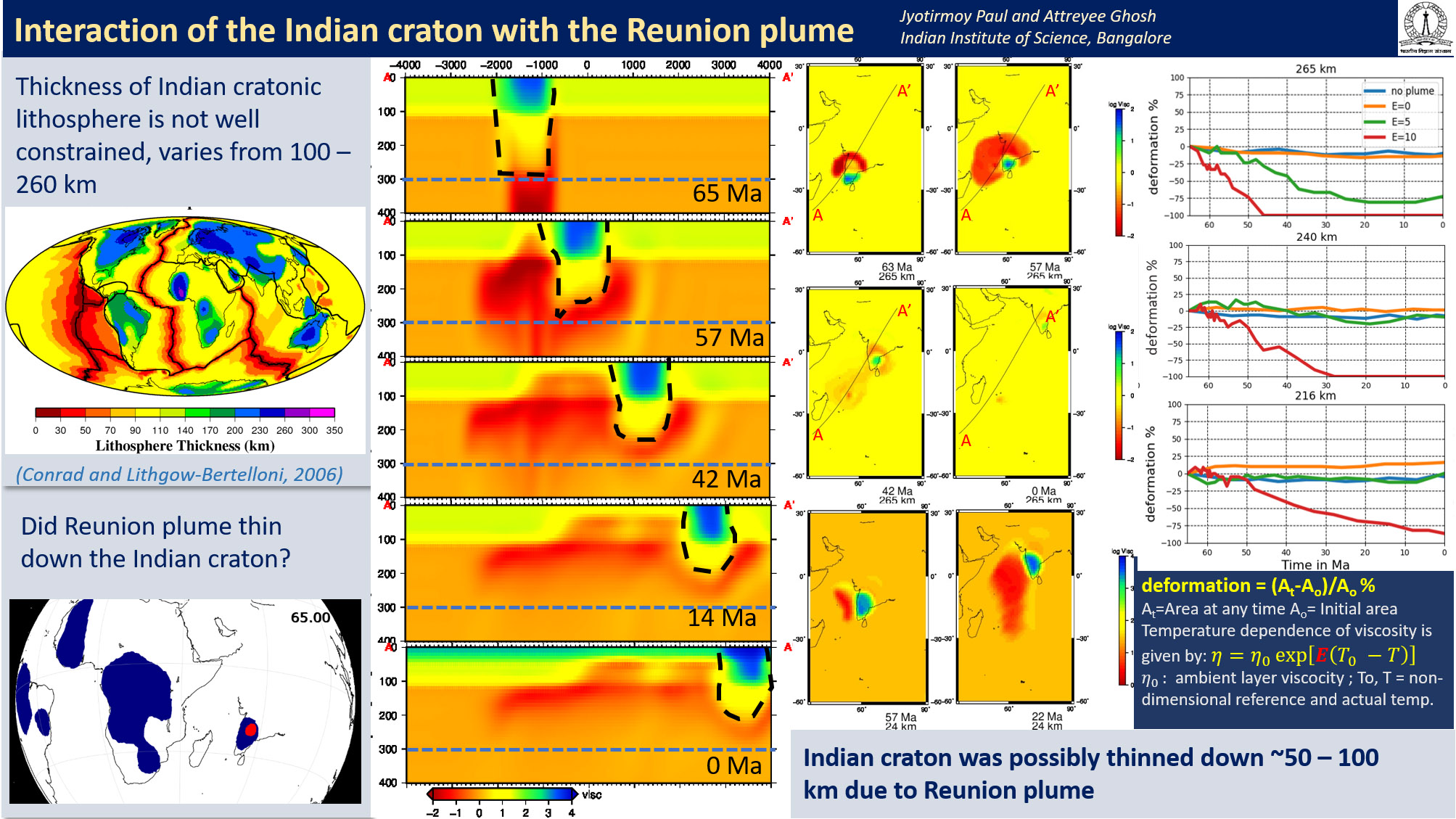Conference presentations
Virtual EGU General Assembly

The thickness of the Indian craton is controversial. Cratons are generally more than 200 km thick.
However, most seismic studies find Indian craton relatively thinner than the usual craton standard.
The favored hypothesis suggests that while the eruption of the Reunion plume underneath the Indian plate,
a part of the cratonic lithosphere was destroyed. We test this hypothesis using numerical modeling.
We start our models at 65 Ma and allow them to evolve self-consistently with time till the present day.
For this, we first reconstruct the location of the Indian craton at 65 Ma. Insert a thermal plume of 1600o C at
the location of Reunion. The models are driven by reconstructed plate velocities that are updated every 1 Myr.
Initially, we put a 300 km thick craton, which is marked by the black dashed line. As it evolves with time,
the destruction of the root is visible. For this particular model, we see around 60 km of the cratonic root has
been destroyed.
We test our models in the presence and absence of the plume. Also, we experiment with different strengths of
temperature-dependent viscosity and calculate how much destruction can be triggered by the mantle plume and its
subsequent viscosity drop.
We find that increasing the strength of temperature dependence can rapidly thin down the Indian craton compared
to the cases with weaker temperature dependence. Also, in the absence of the plume, we do not observe any thinning of
the Indian craton.
From all models, we conclude that the Indian craton can be thinned up to 50-100 km due to the eruption of the
Reunion plume.